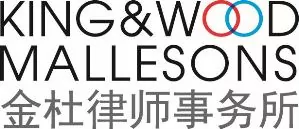August 1, 2012 marks the fourth anniversary of China's Anti-Monopoly Law ("AML"). 1 With only 57 articles, the AML introduces a series of new regimes governing not only transactions but also day-to-day operations of domestic and foreign companies. This article presents an overview of how the AML has been implemented so far, with particular focus on the latest development, and where it may go in the near future.
Merger Control
The Ministry of Commerce ("MOFCOM") is responsible for reviewing concentration of undertakings that trigger a certain turnover thresholds. MOFCOM has reviewed over 450 deals since 2008 with more than 95% of them being unconditionally approved. As of [August 1 2012], fourteen transactions were cleared subject to "restrictive conditions" and one transaction (Coca-Cola's proposed acquisition of Huiyuan) was prohibited.
Although the AML mainly follows the EU pattern, over the years, MOFCOM has developed its own methodologies and has distinguished itself from its foreign counterparts. It was the only major antitrust regulator that imposed remedies on global transactions such as General Motor's acquisition of Delphi (2009), Seagate's acquisition of Samsung (2011), and most recently Google's acquisition of Motorola Mobility (2012). In a few other transactions, such as Western Digital's acquisition of HGST (2012), MOFCOM imposed vastly different conditions. Multinationals do need to plan early and formulate a China strategy if a transaction is expected to have a particular impact in China, even though the transaction may not have any issue in the other jurisdictions.
MOFCOM has further distinguished itself from its foreign counterparts by employing a more receptive approach to conduct remedies: in over half of the conditionally approved cases, the remedies are behavioral. MOFCOM's reluctance to use structural remedies may be prompted by the intention to preserve the original structure of a transaction to the extent possible. However, supervision of conduct remedies has become a challenge. A balance has to be made to ensure that such supervision does not strip the conditions of their substance nor introduce unintended burdens on the obligors' businesses.
In terms of procedure, MOFCOM has developed a streamlined review process, although it is often very lengthy. In February 2012, MOFCOM promulgated the rules for penalizing companies for failure to honor their notification obligations. In July 2012, MOFCOM adopted a revised notification form to replace the old form introduced in January 2009. The new form contains useful clarifications to a few important issues, such as how to determine an "undertaking concerned in a concentration", which bears significance in the determination of the notifiability of a transaction. It, however, also introduces additional information requests.
For example, the new form asks for submission of research results, analysis or reports prepared by or for the board of directors, or senior management (either internally or by a third party). Although this is optional, the filing parties are required to explain in details the reasons for not submitting such documents (if any). The new form also requires the filing parties to disclose transactions in the past three years that pertain to the same relevant market. This could be a tough question for companies who fail to consistently fulfill their filing obligations.
An encouraging development is that MOFCOM is developing a fast track mechanism. Once officially implemented, it is expected to simplify the review process of straightforward cases that are unlikely to have any competition concerns.
Investigation of Monopoly Conduct
The National Development and Reform Commission ("NDRC") is responsible for oversight of price-related monopoly agreements, abuse of dominance, and administrative monopolies, whereas the State Administration for Industry and Commerce ("SAIC") is responsible for non-price-related monopoly conduct. Seven rules covering both substantive and procedural aspects of their AML enforcement functions have been promulgated by the two agencies since 2008.
The NDRC, as the macro-economic policy planner, has historically been tasked with enforcing the price laws. The current Price Supervision and Anti-monopoly Bureau is built on the former Price Supervision Bureau. Understandably, the NDRC very often applied the Price Law and the AML in a mix at the initial stage of its enforcement.
The NDRC established its reputation as a powerful AML enforcement agency in November 2011 when it announced a ground-breaking investigation of China Unicom and China Telecom for their abuse of dominance in the broadband access market. Shortly thereafter, the NDRC fined two Shandong pharmaceutical companies in an amount of about RMB7 million, for their abuse of dominance by selling a key ingredient to a popular hypertension medicine at an excessively high price, which amounted to a constructive refusal to deal. The NDRC is also developing industry-specific block exemptions for monopoly agreements (including such industry as aviation). With two AML enforcement divisions and a competition policy division, the NDRC will play an increasingly important role in AML enforcement.
It was also not until 2011 that the SAIC published two AML investigations. One case related to a market segmentation agreement among concrete manufacturers in Lianyungang, Zhejiang organized by a trade association, and the other related to a local government's abuse of administrative power. Both cases were handled by SAI's local counterparts, which is a distinctive feature of SAIC's enforcement.
Compared to MOFCOM, the NDRC and the SAIC are less transparent. Moreover, unlike the centralized merger control regime, both agencies have delegated authority to their provincial counterparts. The NDRC has delegated its authority on a general basis. As to the SAIC, its authority is delegated on a case-by-case basis for cartels and abusive conducts and on a general basis for administrative monopoly. Local authorities have ample experience enforcing price laws and anti-unfair competition laws. As they gradually develop AML expertise, antitrust investigations will become a routine part of their responsibilities. It is therefore crucial for companies to build up awareness of the AML and adopt internal antitrust compliance programs.
Another interesting observation is the recent joint workshop held by the two Chinese agencies, with the United States Federal Trade Commission ("FTC") and Department of Justice ("DOJ") on the application of antitrust laws to IP-related conduct. Back in 2009, the SAIC developed a draft IP antitrust guideline. It remains undetermined whether IP antitrust will become the next priority for AML enforcement.
Antitrust Private Actions
By the end of 2011, 61 AML private actions were filed and 53 cases were closed. Most cases were claims related to abuse of dominance and plaintiffs almost always lost for failure to establish the defendants' dominance.
In May 2012, the Supreme People's Court promulgated the judicial interpretation governing AML private actions. With 16 articles, the judicial interpretation includes welcome clarifications on key issues such as standing of plaintiffs, jurisdiction, burden of proof, evidentiary rules, and expert witnesses.
In particular, the judicial interpretation provides that for horizontal monopoly agreements that are explicitly identified in Article 13 of the AML2 ,a plaintiff does not have to prove the anti-competitive effects of the agreement. It will be up to the defendant to bear the burden of proving the lack of anti-competitive effects. The judicial interpretation, however, does not include a similar provision for vertical agreements, suggesting that a plaintiff shall still bear the burden of proving that the challenged vertical agreement has anti-competitive effects. According to a press interview with the head of the Intellectual Property Division of the Supreme Court, such a differentiated approach towards horizontal agreements vis-à-vis vertical agreements is out of the consideration that horizontal agreements are generally more harmful, thereby justifying alleviation of plaintiffs' burden of proof in the judicial process.3
Several issues had already been tested in an earlier case. In April 2012, the Guangdong Higher People's court held the first hearing of the Qihoo v. Tencent case, an abuse of dominance action of the first instance. This is by far the most high-profile and complicated AML litigation in the Internet industry in China. Qihoo developed ample evidence to establish Tencent's dominance. Experts were also called on to testify at the hearing.4
International Cooperation
Antitrust enforcement is characterized by extensive international cooperation. The three Chinese AML enforcement agencies have signed memoranda of understanding with their counterparts in various foreign jurisdictions.
Noticeably, in July 2011, the NDRC, MOFCOM and SAIC signed an MOU with the FTC and DOJ, laying out the framework for long-term cooperation between antitrust agencies on both sides. In November 2011, MOFCOM further developed the guidance for cooperation on merger cases with the FTC and DOJ, setting out the framework for cooperation on individual merger cases. The NDRC has separately entered into MOUs with the UK Office of Fair Trading ("OFT") and the Korea Fair Trade Commission ("KFTC"). The SAIC has signed MOUs with OFT, KFTC as well as the Russia competition authority and also sponsored the second BRICS International Competition Conference in September 2011. In addition, the three Chinese agencies have been maintaining close dialogues with the Directorate General for Competition of the European Commission and have jointly organized many workshops and conferences. With the deepening of international cooperation, Chinese antitrust agencies are expected to become more active in the detection and investigation of international monopoly conducts, in particular cartels.
Concluding Remarks
With only four years of history, the AML has already brought about far-reaching impacts on companies doing business in China. Dubbed the "economic constitution", the AML is bound to re-shape the competition landscape in China's developing market economy.
Footnotes
1The AML was published on August 30, 2007 and
officially came into force on August 1, 2008.
2Such agreements include price fixing, output
restriction, market segmentation, restriction on the procurement or
development of new technologies, and joint boycotts.
3For the whole text of the press interview with the
Supreme Court judge, please refer to
http://rmfyb.chinacourt.org/paper/html/2012-05/09/content_44536.htm
(in Chinese, last visited on July 26, 2012).
4Qihoo is represented by attorneys from the antitrust
and IP litigation groups of King & Wood Mallesons.
The content of this article is intended to provide a general guide to the subject matter. Specialist advice should be sought about your specific circumstances.


